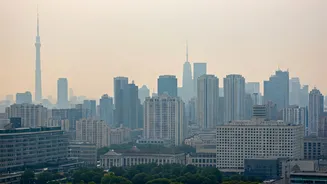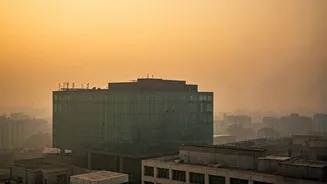Alarming Pollution Levels
Recent data indicates a grim reality for Delhi's air quality. A significant number of stations, specifically 22, have recorded a 'severe' Air Quality Index
(AQI). This alarming figure underscores the urgent need for action to mitigate the hazardous levels of pollution. The continuous monitoring of these metrics is crucial in grasping the severity and impact on public health. Such high levels of pollution pose immediate health risks, highlighting the critical nature of the issue. The situation requires immediate attention and intervention from relevant authorities to ensure the safety and well-being of the residents. The continued severity emphasizes the need for consistent awareness and proactive solutions.
Most Polluted Areas
Identifying the locations most severely affected by air pollution is vital to understanding the issue's scope. The article mentions specific areas within Delhi that currently exhibit the highest AQI readings. These locations require special attention due to the significant risk they pose to residents. These are areas that residents should be especially aware of. Furthermore, the high pollution levels also necessitate the immediate implementation of targeted pollution control measures. The severity in these regions warrants stringent actions to safeguard public health and reduce the adverse impact on vulnerable populations. Continuous monitoring of these areas, coupled with the application of effective mitigation strategies, is crucial for improving air quality.
Least Polluted Locations
Contrasting the most polluted areas, the piece also highlights the areas that are experiencing relatively lower pollution levels. These locations provide a crucial point of reference when assessing the city's overall air quality landscape. While even these locations still have pollution, it is, comparatively, not as severe. This comparison is useful in gauging the relative performance of different areas in terms of air quality. Understanding these variances is essential for targeted intervention strategies. The identification of areas with lesser pollution also allows for the assessment of factors contributing to better air quality. The analysis of these elements can help in formulating policies that improve the overall air quality for the city.













